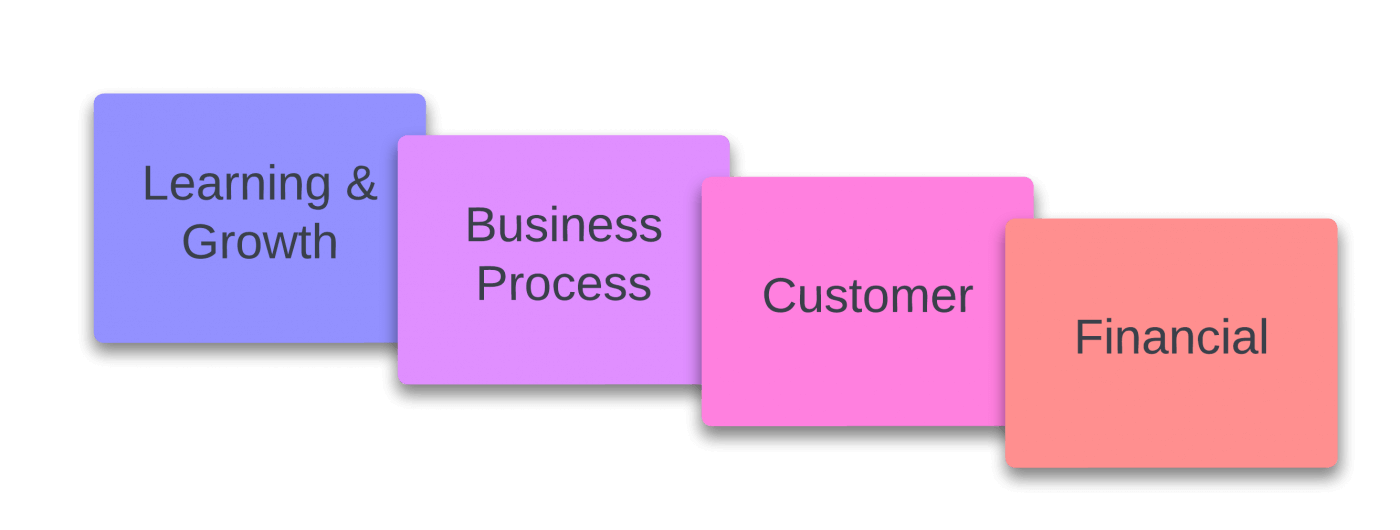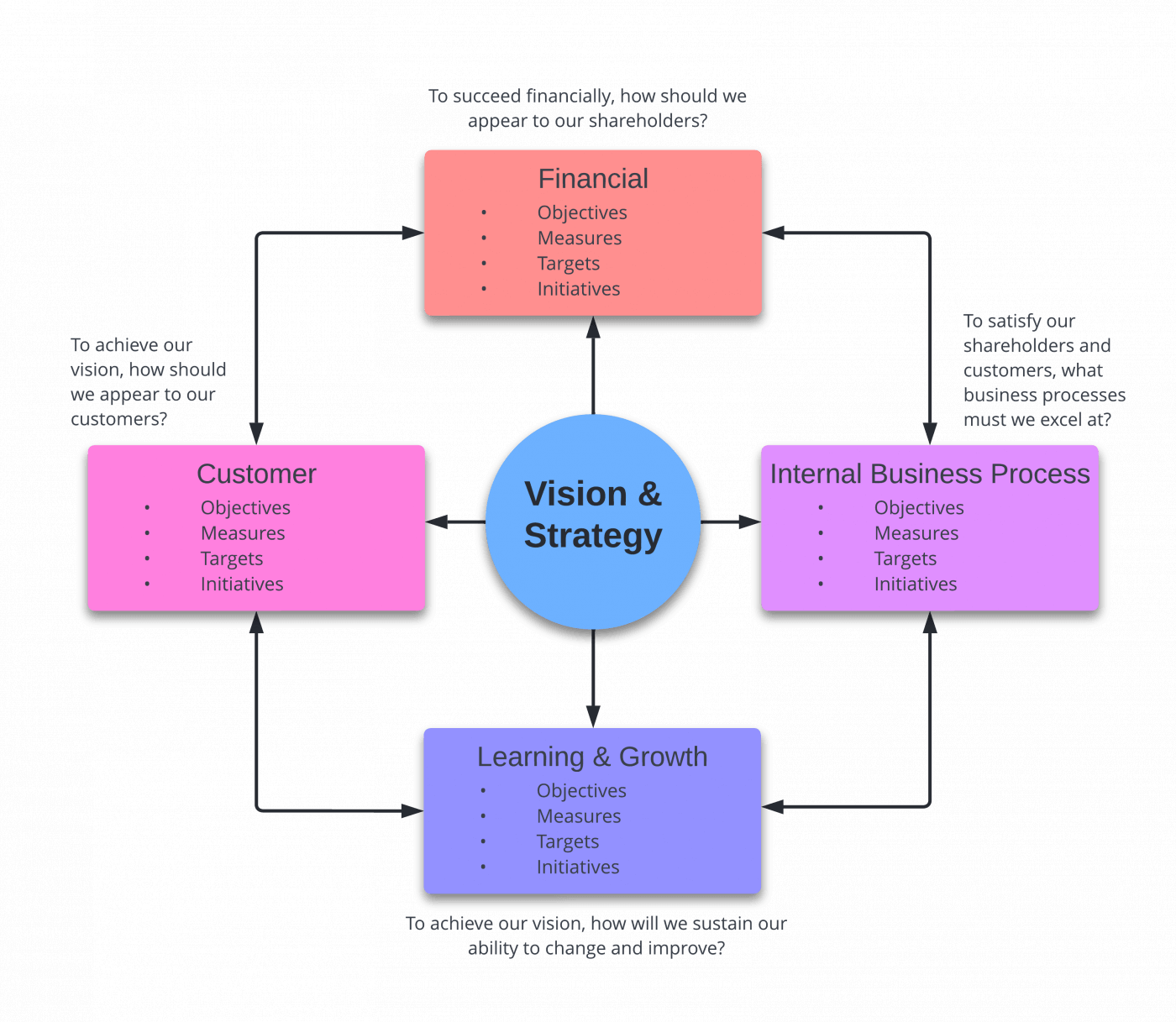The Origin
In a 1992 Harvard Business Review article, Drs. Robert Kaplan and David Norton introduced the balanced scorecard. They compared the world's most successful businesses and found commonalities. Each top-performing business had a clear vision and strategy across finance, customer, and employee-related internal processes.
Overview
The video below provides a well constructed short overview.
This visual summary explaining the Balanced Scorecard and how it relates to business was published by IntrafocusUK.
Purpose
The balanced scorecard is used to manage performance in any business model, organizational structure, or business process.
It balances financial and non-financial measures.
Description
The balanced scorecard is a tool for strategic planning and management that is used to measure the performance of an organisation in more ways than just finances. It is focused on the results and gives a balanced view of an organisation by putting the strategic plan into action as a framework of goals and measures of performance. The balanced scorecard is based on the idea that the drivers of value creation need to be understood, measured, and optimized for long-term performance.
The balanced scorecard is composed of the following four dimensions:

The balanced scorecard has measurable goals, specific measures, and expected results that come from the vision and strategy of an organisation. Balanced business scorecards can be used in different ways at different levels of an organisation. This includes the enterprise as a whole (the macro level), a department or function, or a project or initiative.

When To Use
The balanced scorecard is an appropriate technique to consider by a Business Analyst during tasks related to Strategy Analysis, specifically, when defining the Future State and Change Strategy.
Summary
In current times the balanced scorecard has become an effective tool for ensuring alignment through strategy maps, improving communication through a common language, and leading to a higher-performing, aligned organisation.
Reference
- BABOK® Guide v.3, 10.3 Balanced Scorecard - IIBA®
- YouTube, Balanced Scorecard - IntrafocusUK

Post a Comment